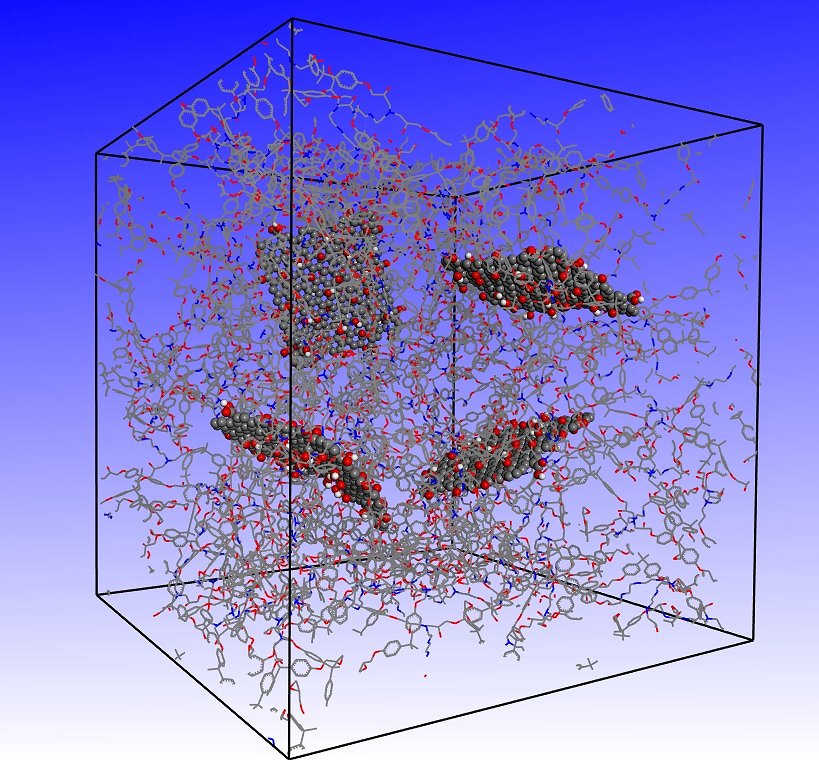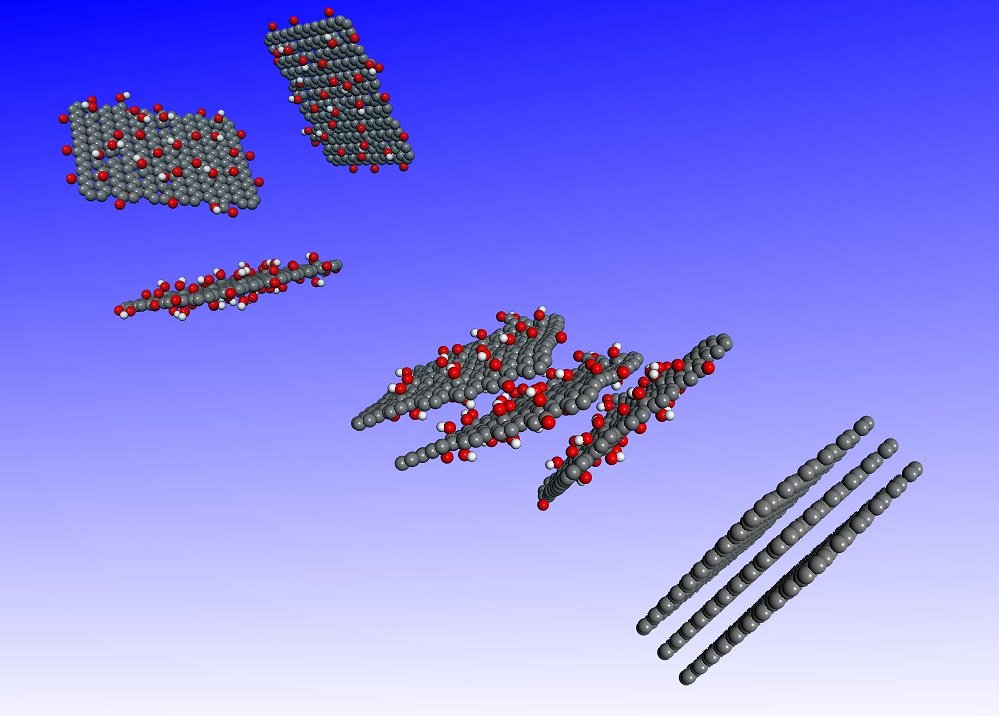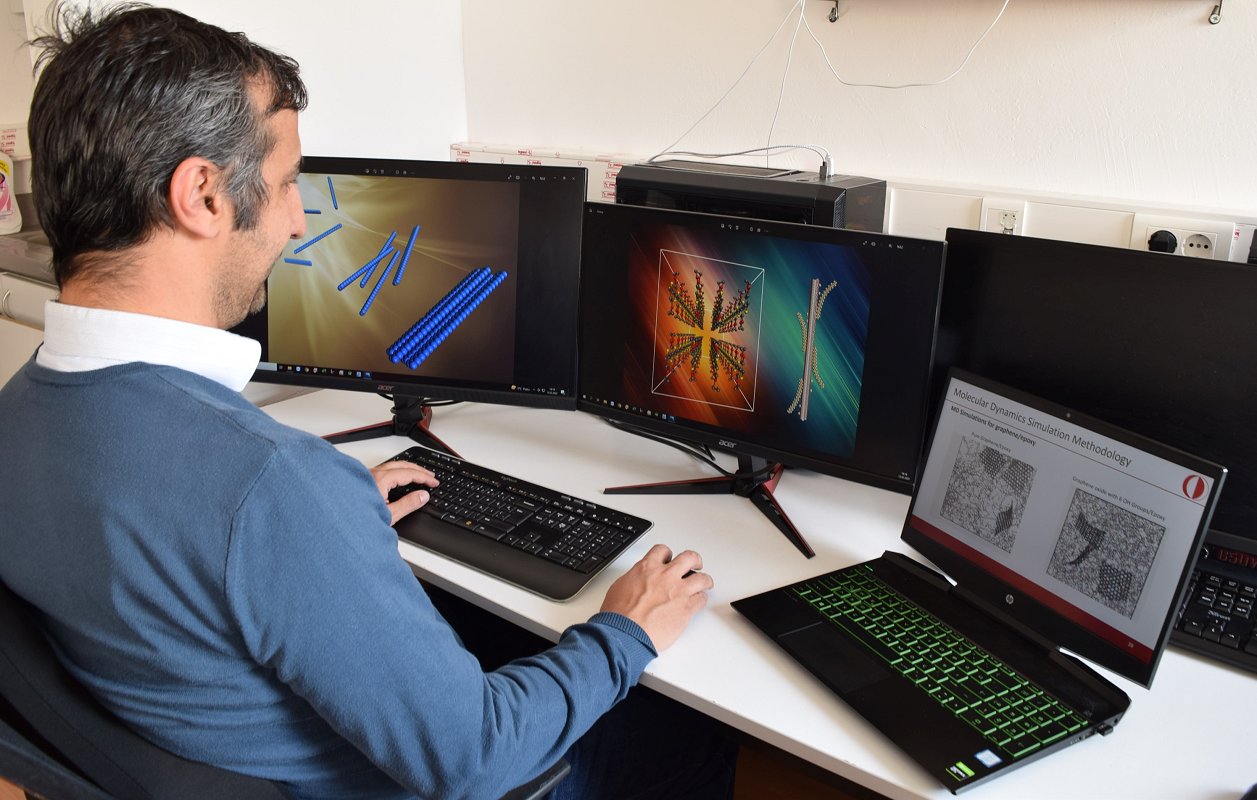Better Graphene-Epoxy Based Composite Materials with HPC
Obtaining highly dispersed graphene sheets and improving their interaction with the epoxy matrix are the main challenges to producing high-performance graphene reinforced epoxy composites. Functionalization of graphene structures with oxygen-containing groups is crucial to overcome these challenges. This experiment optimized these parameters using theoretical methods in HPC systems to simulate pathways to a more homogeneous and repeatable material manufacturing process for epoxy/graphene oxide nanocomposites for the composite industry.
SECTOR: Manufacturing
TECHNOLOGY USED: HPC, MD Simulations, Monte Carlo Simulations
COUNTRY: Turkey
The challenge
Composite materials are composed of a base material, e.g., a polymer resin like epoxy (the matrix), and one or more additives giving it enhanced or special mechanical, thermal or electrical properties.
Nanografi sells more than 1,000 different advanced materials with nano and micron-sized additives and one of the most popular products are nano-sized graphene and graphene oxide (GO)-enhanced polymer composites that are highly attractive as advanced materials in the aerospace industry due to their superior properties. These materials perform better in comparison to conventional epoxy-graphite composites with micro-sized large graphene aggregates. Alti Dynamics is a business partner of Nanografi specialising in the search for additives resulting in composites with enhanced properties and applications. Their current process is based on a “synthesize-test-improve” cycle with a lot of human resources spent in the trial-and-error stages to develop the composite with the best physical and mechanical properties. However, since many parameters influence these properties, such as the type of epoxy polymer, the dispersion of graphene layers, and pre-treatment conditions, these experiments are both costly and time-consuming. Moreover, homogeneous dispersion and strong adhesion of GO sheets to epoxy resin are crucial to enhance the properties of materials, yet obtaining highly dispersed graphene sheets and their enhanced interaction with the epoxy matrix is a challenge, which is hard to meet solely with experiments. Therefore, Alti Dynamics was searching for ways to reduce both the related costs and the duration for obtaining patentable, optimised recipes for nano-composite production.
The solution
The solution developed in the experiment is to use computational chemistry methods on HPC systems to simulate potential enhancements to material properties of epoxy/GO nanocomposites and to investigate the simulated improvements by controlling the parameters. The simulations were validated usingproduced samples. The types and number of functional groups on GO, the mass percentage of GO in the resin matrix, and the structure of the epoxy resin were optimized. The epoxy/GO nanocomposites synthesized by the Nanografi Company were tested for mechanical and thermal properties of the manufactured specimens by Alti Dynamics and simultaneously modelled by the HPC experts in METU using the HPC infrastructure to analyse the observed properties at a molecular level and to guide optimised recipes to obtain better material properties. These experts, in collaboration with infrastructure from the HPC centre, have helped implement a computational route for the Alti Dynamics and Nanografi model of the composites using classical molecular dynamics (MD) to identify strong candidates for the actual synthesis stage. Due to the size of the system and effect of molecular level of the interactions, these simulations require a large HPC infrastructure. Each individual. simulation has more than 30,000 atoms under periodic boundary conditions simulated for 5 nanoseconds by using 48 CPU cores in an HPC centre in less than 24 hours or by using GPU cores in a few hours. To determine epoxy/GO composite parameters, a simulation workflow has been designed to facilitate the expensive and time-consuming synthesis stage of the composites to help shorten the manufacturing process.
Business impact, Social impact, Environmental impact
Thanks to this experiment, Alti Dynamics is now using the results of the HPC-based simulations to obtain high-quality epoxy-graphene nanocomposite materials for various advanced aerospace applications, reducing development time by up to 15% and costs by up to 20% while increasing their competitiveness. The HPC results provided insights that led to optimised parameters for large-scale production and commercialisation of epoxy/GO nanocomposites with improved properties in less time and with higher accuracy. By moving to a simulation-based workflow, the companies expect to reduce testing material waste by 75% (approximately €260,000 savings per year) and raw material consumption by 40% (approximately €315,000 savings per year). The new capabilities of the HPC-based workflow will provide Alti Dynamics with a competitive advantage and a corresponding increase in revenue, which is expected to add €750,000 over the next 3-4 years.
Nanografi will be able to sell significantly more raw graphene products to customers, especially automotive and aerospace companies, and their suppliers, through the optimisation provided by Alti Dynamics' performance testing studies in collaboration with HPC simulations, which is a profitable advancement for both companies. Following the commercialisation activities of the industrial partners, graphene will gain a stronger foothold in the composites market as a mechanical performance-enhancing and weight-reducing additive that is highly desired properties for aerospace material applications.
Benefits
- Alti Dynamics expects to save over €260,000 per year in wasted and raw materials via a reduced trial-and-error process during application testing.
- Alti Dynamics expects to generate annual revenues of approximately €150,000 in the first year. The projected return for Alti Dynamics is approx. €750,000 increased revenue within 3-4 years using the results provided by HPC Simulations.
- Within 3 years, Nanografi expects to increase sales of graphene-related products by a factor of 10.
Organisations involved:
Technology Expert: Alti Dynamics
HPC Expert: METU
HPC Center: TUBITAK
End User: Nanografi
Partner TUBITAK is part of the Turkish NCC.




